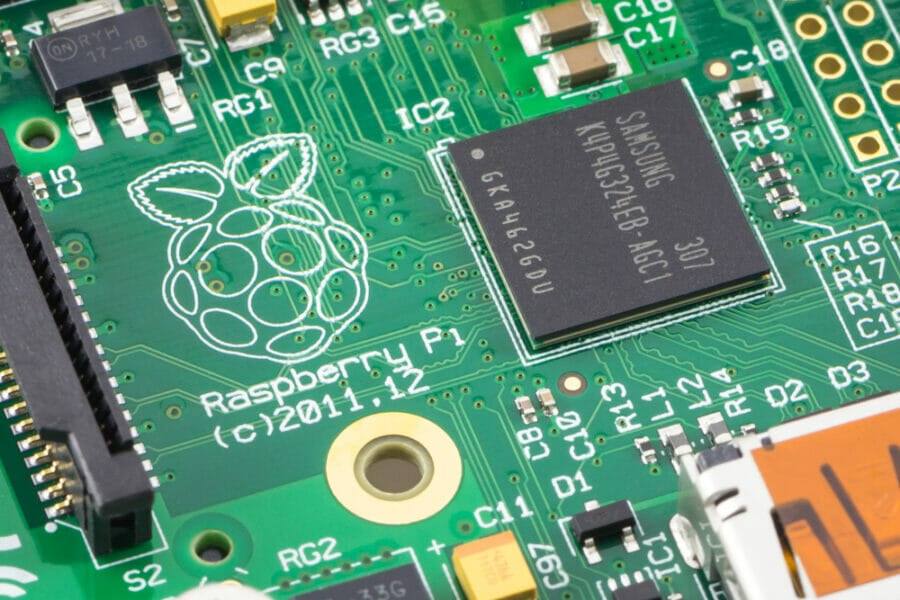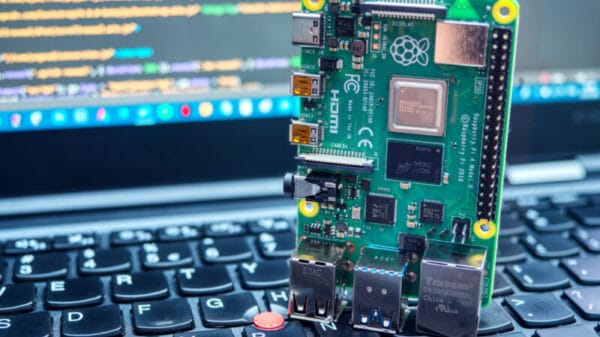This month saw the release of new camera modules by Raspberry Pi. While the attention was mainly on the version 3 of their standard camera module, they also introduced an updated version of their high-quality camera featuring an M12 lens mount. The version 3 module is definitely worth exploring, prompting me to visit the Raspberry Pi Store in Cambridge to acquire one for review.
Camera modules for the Pi have been available for some time, both officially and from third-party sources. Therefore, for a new module to stand out, it needs to offer something unique. The latest module boasts a 12-megapixel sensor and is offered in autofocus and wide-angle versions in both standard and NoIR variations. Though autofocus and wide-angle modules may be new in the official cameras, they have been present in third-party offerings for years.
So, if an autofocus camera module for your Pi isn’t groundbreaking, what can we bring to a review beyond just admiring the minor details? Perhaps it’s more valuable to assess the new camera within the Pi camera ecosystem and what better way to do so than by transforming a Pi and some modules into a functional camera!
This Camera Is More Than Just Any Camera, It’s a Hackaday Camera!
Alongside the V3 non-wide-angle camera module, I purchased a Pimoroni Display HAT Mini and a Pi Zero W. The camera module itself retains the small PCB form factor of its predecessors but with a slightly larger silver protrusion around the lens due to the autofocus mechanism.
My idea was to assemble these components into a camera system. To complete the hardware setup, I created a camera case in OpenSCAD, a parameterized project box with slots for the module and the Pimoroni display, along with a visually appealing, albeit non-functional, lens hood tube at the front.
After some 3D printing and assembly, I had a camera, or at least something resembling one. However, a digital camera requires software, and recently, libcamera has been the go-to choice for Raspberry Pi users on the command line. Although the previous software stack is still usable, it is no longer supported. Similarly, the Picamera Python library is being phased out in favor of the picamera2 library. Despite my limited programming skills, I managed to put together a basic Python camera script that updates the Pimoroni screen as a viewfinder, with one of its buttons serving as a shutter. Undoubtedly, there are skilled readers out there who could create a superior script.
While discussing peripherals is essential, a camera’s performance hinges on the images it produces. The sensor used in the V3 module is the Sony IMX708, utilizing Sony’s latest sensor technologies. Although information on this sensor is scarce on the Sony Semicon website, it has been spotted as a secondary rear camera in some recent mobile phones, providing an insight into its capabilities. The standout feature of this module is the autofocus lens, fully controllable via software, allowing for manual focus settings or automatic mode. I opted for the latter and began capturing images around my workspace.
Autofocus Takes Center Stage
One notable aspect is Sony’s efficient autofocus algorithm in automatic mode, especially when focusing on clear subjects. Close-ups of screwdriver bits or a Pi Zero exhibited intricate details, as did landscape shots. However, when attempting to focus down a table with a tape measure, the autofocus struggled to differentiate between foreground, middle ground, and distant objects in successive shots. For more adept programmers, a windowed autofocus mode is available for more precise focusing.
The camera found it difficult to choose where to focus. Outdoors in January, and as you’d expect it’s a bit grey. This camera is good at close-up shots.
In conclusion, the V3 camera module represents a more significant leap forward compared to the V2 module over their initial model. While the increased resolution is a welcome addition, the autofocus feature enhances its utility significantly. If the HQ camera module aspires to emulate a mirrorless compact camera, then this module aims to offer the image quality of a decent mid-range smartphone camera, an objective it achieves admirably.
For its price point of around $25, the module is a worthy investment if you require a quality compact camera module. While cheaper alternatives and other autofocus modules can be found on typical electronics platforms, this module’s slightly higher cost is justified by its expansive support. Personally, I am pleased with my purchase and intend to refine my scripting skills to optimize its performance.
Before concluding, it’s worth highlighting the Raspberry Pi store in central Cambridge where I acquired the module. Not only is it a public showcase for Raspberry Pi products, but it also offers a convenient location to purchase a Pi, even during supply shortages, with a side note to visit the Centre for Computing History nearby! The knowledgeable and helpful staff, along with glimpses of Pi prototypes, make it a worthwhile visit for Pi enthusiasts, even if a trip to Cambridge requires some effort.
Image Source: Zoltan Kiraly / Shutterstock















